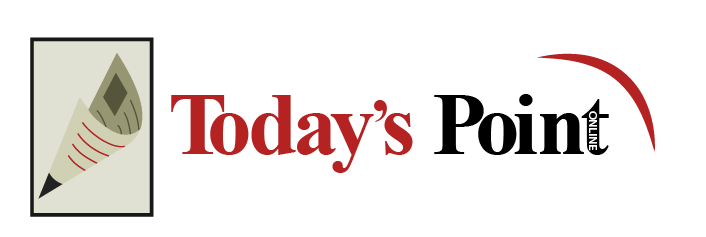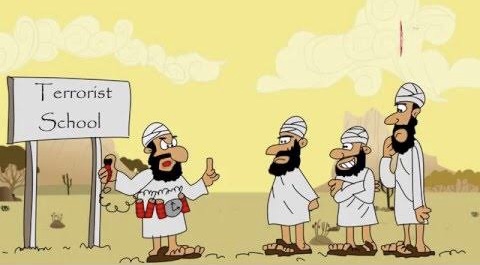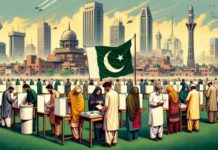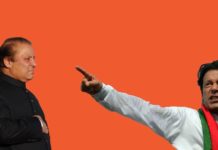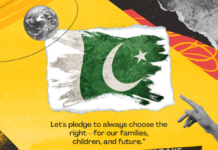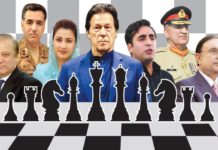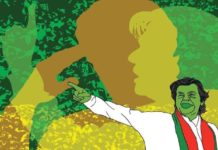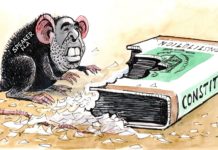Developed countries stand on strong foundations of tolerance, pluralism and diversity. These values brought Europe, based on religious fundamentalism, out of the Dark Age, rejected papacy and monarchy, and ushered Europe into a modern age that embraced knowledge, justice and morality, and rejected outdated anti-people structures.
Pakistan’s 73-year history is a story of economic, social, scientific, intellectual, political, and cultural obsolescence. Where the same type of religion is sponsored by the state and religious shop keeping is on the rise to establish a monopoly of a particular sect. For seventy years, young people have been taught the same kind of religiosity developed in Deobandi (Religious School of Thought) madrassas and their minds are being filled with prejudice, narrow-mindedness and hatred. The curriculum of schools across Pakistan lacks the diversity that students are exposed to in the real world. In the last seventy years, the consciousness of the youth has been frozen and the barriers of this artificial monotheism have been erected in their conscious evolution.
From the womb of this curriculum, in the time of General Zia-ul-Haq, such groups got the manpower that carried out the massacre of other sects and religious minorities in the name of Islam as a systematic plan. During the Zia era, the door to government jobs opened on madrassas, as well as on the billion-dollar Afghan jihad industry, and the mushroom growth of madrassas of the same sect exacerbated the situation. Even the certain segment of this sect floats the ideology based on intolerance and bigotry. Today, the situation is that in every government and non-government organization there are people with violent tendencies.
The only way out of this situation was by imposing an educational emergency at the grassroots level. It should have been based on modern research on the Pakistani education system and a curriculum based on social realities and needs that would represent Pakistan. On the contrary, the current government has developed a uniform national curriculum, a new form of one-sided religious propaganda and a slow but dangerous process of converting schools into takfiri madrassas.
The new uniform national curriculum in Islamic studies is reminiscent of General Zia-ul-Haq’s dark days, but it is more dangerous than Zia-ul-Haq’s sponsored madrassas. On the one hand, this syllabus is based on intolerance for other sects and religions, because it mentions them as if they are infidels. That’s why this curriculum promotes rigidity. On the other hand, the distorted Islamic history based on contradictions fills the minds of the youth and prevents them from becoming enlightened and progressive.
What is wrong with this curriculum?
From the slogan (one nation, one curriculum), contents and methodology to the spelling, there are flaws in this syllabus. One Nation, One Curriculum, A combination of multi-colored nations, cultures, civilizations and sects like Pakistan pushes the country towards hypocrisy and mistrust. To this day, any country that has tried to forcibly paint the sects, minorities and nations in the color of one nation by removing their unique identities has resulted in a weak state. Far from it, the fall of Dhaka itself is an internal example.
The biggest problem with this curriculum is that it is not inclusive and comprehensive. Instead of representing all Islamic sects, the uniform national curriculum of Islamic studies is the “Labayki and Takfiri-Deobandi” fascist curriculum. In which history, personalities, festivals as well as every section has been corrupted and especially the Shia sect, which is 20 to 25 percent of the population of Pakistan, has been completely ignored. Here are some examples:
1. In the chapter on personalities, there has been a deliberate attempt to alienate Shiites. For example, there are four caliphs mentioned in this chapter, but there is no mention of Imam Hussein and Imam Hassan, the grandsons of the Holy Prophet, who are respected in all sects and without whose mention the history of Muslims cannot be complete. Is. Hazrat Fatima Zahra (peace be upon her), who is considered by all sects as Syeda Al-Nisa Al-Alamin, is not mentioned in this syllabus. It is as if an attempt has been made to remove from the syllabus all the important personalities who unite the Shiites and the Sunnis except the Holy Prophet (SAW) and Hazrat Ali.
2. Historical events are of utmost importance in the history of Islam, which are commemorated every year by all Muslims in their own way, i.e. the subject of Karbala is not included in this syllabus. Can the history of Islam be complete without mentioning Karbala? The incident of Karbala, Fadak or Thaqifah are not controversial issues and every sect of Islam recognizes Imam Hussain as the custodian of truth and calls his martyrdom a tragedy, so why is it not part of the curriculum?
3. For hadiths, only Sahih Sittah has been used as a reference. There is no mention of Shia collection of hadiths and no hadith is being added from them. However, the importance of the use of reason and reflection, from which it is very important to seek guidance in dealing with the challenges of the modern age.
4. In the chapter on Sufism, Sufis of the Middle East (Abdul Qadir Jilani, Maulana Rumi, etc.) are being taught instead of the local Sufis of the subcontinent. The land of the subcontinent, especially Pakistan, is rich in Sufis and their work is enriched with regards to local culture. The mention of Hazrat Abdullah Shah Ghazi, the great grandson of Imam Hassan, is missing from the syllabus. Mention of Lal Shahbaz Qalandar, Khawaja Moinuddin Chishti Ajmeri, Bari Imam is also missing. Isn’t it time to include the words of Baba Bullay Shah, Waris Shah, Shah Abdul Latif Bhattai in our curriculum? Who is not familiar with the saints buried in Multan, the land of saints? But not all of these Sufis are Islamic figures according to the “national” curriculum. If this curriculum is for the Pakistani nation, then it should mention local Sunni and Shia Sufis.
5. The festivals include the celebration of Milad-un-Nabi, which is a welcome step, but not Muharram, as if commemorating the martyr of Karbala is not Islamic. However, this curriculum includes a lesson on the Tablighi Ijtema which started a hundred years ago in the name of Da’wah Tabligh. The history of Muharram in this region is at least a thousand years old and its historical continuity goes back to the time of the Fatimid rule in Multan. Both Shiites and Sunnis celebrate Muharram in their own way. Apart from its historical and cultural status, the shar’i status of Muharram is no less than preaching. Crying over the martyrdom of Imam Hussain (AS) is also a Sunnah of the Prophet according to Sunni books. By hiding the tradition of remembering Karbala, it has been shown to be indifferent to Islam.
The curriculum claims to promote religious harmony, but does not mention festivals of other religions, such as Christmas, Holi, etc. In this way, the curriculum brainwashes the child against these festivals and leads him to violence and extremism.
6. It is being said that when this syllabus is taught, non-Muslims should go out of the room. First of all, what should they do after going out? Secondly, will they not be stigmatized as “the others” by the majority of the class? The problem is not only of children belonging to non-Muslim or other sects but also of children belonging to the majority who are being fueled by the fire of extremism. To date, suicide bombings have mostly targeted teenagers and school-age children. Those children are not robots, they are human beings and deserve our sympathy. The children who are kept completely ignorant about the various religions and sects of Pakistan in the theology curriculum later become Saad Aziz, Akram Lahori, Dr. Usman, Ehsanullah Ehsan and Malik Ishaq. The problem is in basic education and training.
7. Another important question is about the teacher, who is teaching all this, what is his/her background and where do their sympathies lie? Most schools have graduates from Deobandi madrassas who teach Islamic studies and their markets are mosques of their profession, not public schools. Maulvi, a graduate of a sect’s madrassa, will focus on the teachings of his sect. Teachers must be graduates of universities where they have professors teaching different sects of Islam and they must have at least taken a course in non-Muslim religions of Pakistan and interfaith harmony (pluralism) in Pakistani society.
In addition to a teacher of Islamic studies, a Qari (Memorizer of Holy Quran by Heart) from madrassa is also being recruited in the schools to pave the way for more government jobs in the proposed curriculum. It is clear that this move will drastically increase the number of madrassas and further strengthen the Deobandi pressure groups in the future, which may at some point be in a position to dominate state institutions.
If the government has to create a uniform curriculum then it must be free from defects. Instead of making it a Sunni / Deobandi fascist Islam, make it a “theology” in which all religions and sects have a place, representation and are taught to tolerate religious differences. We do not want a separate Islam for every sect, just as we do not want a separate Pakistan for every sect. Every sect and religious minorities should be represented in the same curriculum. The same curriculum should be more all-inclusive and diverse. Otherwise, if the current curriculum becomes popular, then in the next 10 to 15 years, schools will also become terror breeding grounds and no one else but, we as a nation will pay the price.
Note: This article was first published in Urdu, in Nayadaur by Gul Zahra Rizvi
